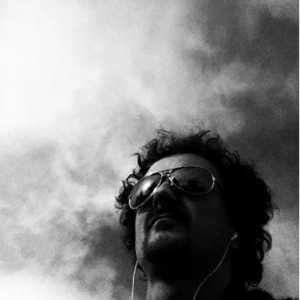The great weekend of #coverfriday, #ds106 student programs, and Saturday night pass the mic on #ds106radio led me to reflect on the unique sociality of #ds106radio. Noiseprofessor noted,
ds106 radio is like mass communication for the few. That is, you can find out how many people are listening (+/- 1 or 2 – it’s a safe bet that some folks are out there but not showing up in the counts), address them directly via Twitter (or give them the business for ignoring it), take requests, shout out to every single listener (except the ones you don’t know are there), pass the mic to Japan, and just generally connect in unusual and interesting ways.
#ds106radio is an open, public channel. There are lots of tutorials on how to listen and be heard on this channel. In many ways, I find it is much like ham radio, but with TCP/IP instead of shortwaves and a #hashtag for a call-sign. As I ruminated on this metaphor, I started doing a little reading on ham radio culture and discovered systems called software defined radio (SDR).
A basic SDR system can be a PC with sound card, preceded by some form of radio frequency receiver. The signal processing that used to be crunched by specialized hardware can be tackled by the PC’s processor, allowing for radio capable of receiving and transmitting a wide range of waveforms determined by the software.
The video below is an example of desktop SDR from Ken & Sharon Lotts (AA7JC on Flickr)
While some SDR are proprietary software packages, there are many open source packages, like GNU Radio, that offer software with the ability to experiment, explore, and get creative with radio spectrum.
As I read through ham radio forums and technical docs, I discovered reference to a project out of the University of Twente from 2008 called WebSDR. WebSDR is essentially a receiver connected to the internet, allowing many listeners to listen and tune it simultaneously. WebSDR technology makes it possible for all listeners to tune independently and listen to different signals.
WebSDR was designed as a means to make a 25 m radio telescope at Dwingeloo available to many radio amateurs for EME reception. To beta test the software without using the 25m dish, a shortwave WebSDR was set up on Christmas Eve 2007 at the radio club of the University of Twente. Since being publicly announced in April 2008, interest in WebSDR has grown considerably with many radio hobbyists worldwide expressing interest in establishing their own WebSDR servers. Further beta testing began in November 2008 with a few selected stations. When these beta tests are complete the software will be made available publicly at their site.
A typical WebSDR server consists of a PC running Linux and the WebSDR server software, a fast internet connection (several hundred kbit/s uplink bandwidth per listener), and some radio hardware to feed antenna signals into the PC. This radio hardware is typically a quadrature mixer connected to the PC’s soundcard. This hobbyist has a great series of photos outlining his WebSDR setup.
I found a WebSDR project hosted in Reston, West Virginia under the call-sign W4MQ. I wandered around the radio spectrum from 3 PM to 4 PM, broadcasting my journey to #ds106radio as I went along. I was amazed at the conversations I picked up in 60 minutes. I archived the audio from the hour and stitched together a few of my favorite pieces – most notably the connection and conversation between Philadelphia, Vermont, Italy, and Peru. One of the operators during this intercontinental conversation signed off with the term “good DX”. According to this glossary of hamspeak, DX is an early telephone term for distant exchange. Ham radio operators are sharing ideas and stories and simply enjoying connections with each other – much like #ds106radio folks – that’s good DX.
March 13 Ham Radio Recordings from W4MQ Remote Base – 3-4 PM (PST)
[audio:http://web.unbc.ca/~gpotter/audio/gooddx.mp3]

I was listened to this broadcast on my phone while I was out on an early morning walk. I particulary enjoyed a conversation between two guys about the shortcomings of the CNN coverage of the earthquake and tsunami in Japan. Their conversation was underscored with line noise, clipping, squelch and other ambient textures of the shortwave process. Fascinating listening. Thanks for tuning ds106 radio in!